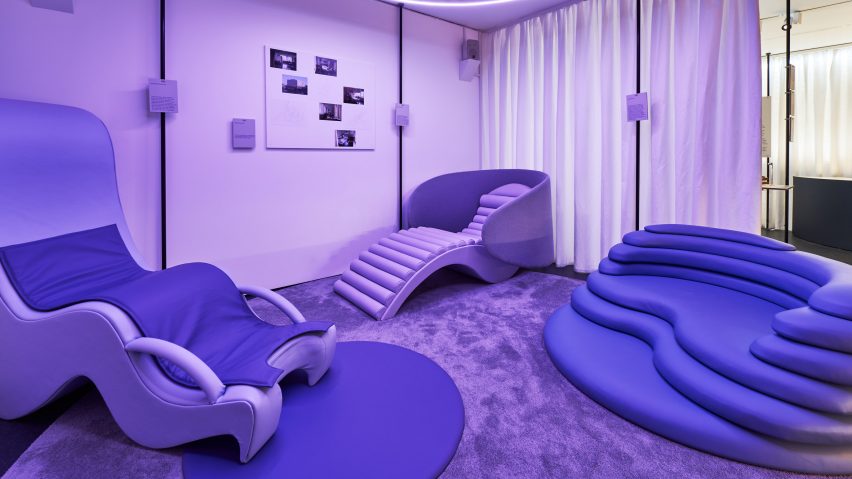
Stiliyana Minkovska reimagines hospital maternity wards as "interstellar" spaces
London-based architect Stiliyana Minkovska has designed a trio of undulating birthing chairs called Ultima Thule, which offer women a "sanctuary-like" environment during childbirth.
Minkovska's alternative birthing suite, called Ultima Thule, comprises a collection of three chairs that are designed to support different stages of childbirth.
The project was conceived as an alternative to "hostile" hospital maternity wards, which, as Minkovska told Dezeen, made her feel like a "medical object" during her own birthing process.
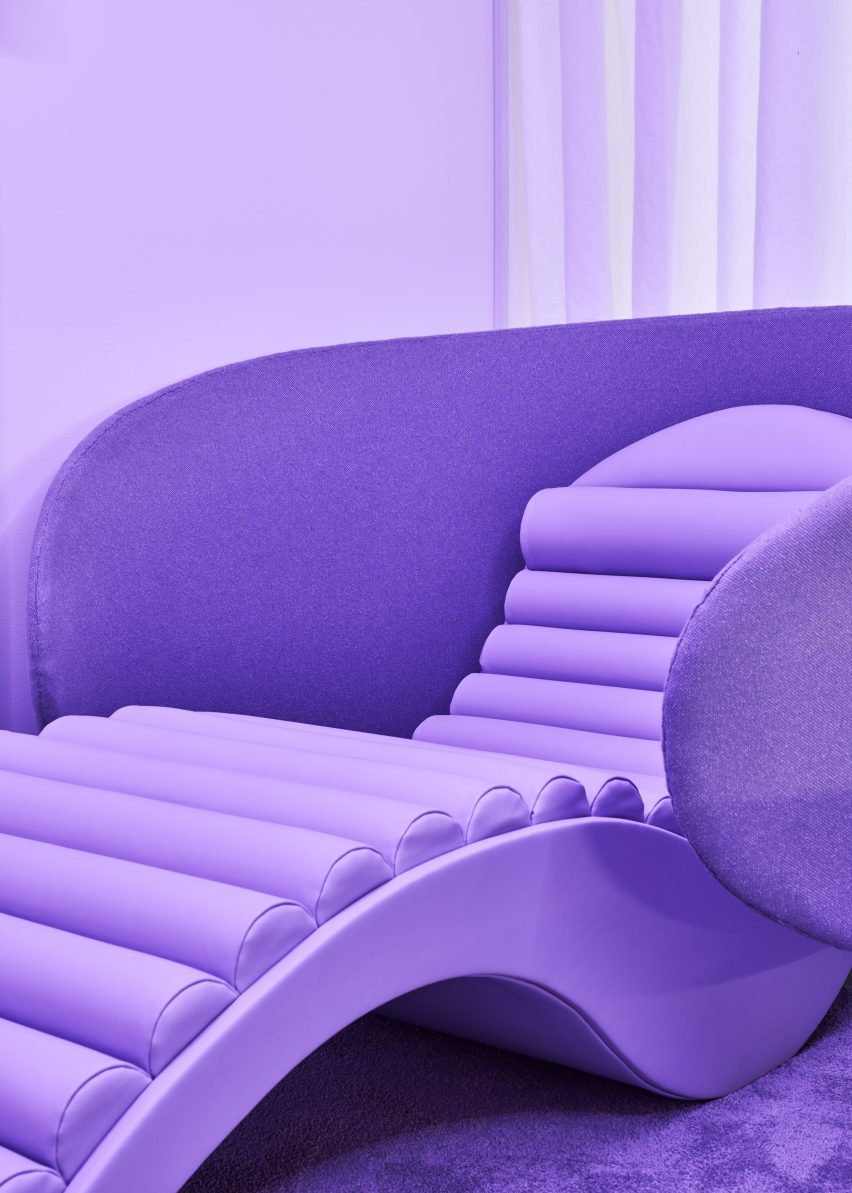
When giving birth to her daughter, Minkovska explained how she found respite in "exploring the farthest imaginable place".
This, for her, was "ultima thule" – a term derived from Latin that translates to "a distant unknown region" or "beyond the known world".
Inspired by methods such as hypnobirthing and water-births, Minkovska's designed Ultima Thule birthing suite as a "sanctuary-like" space where the mother can have greater control over her delivery and reproductive health.
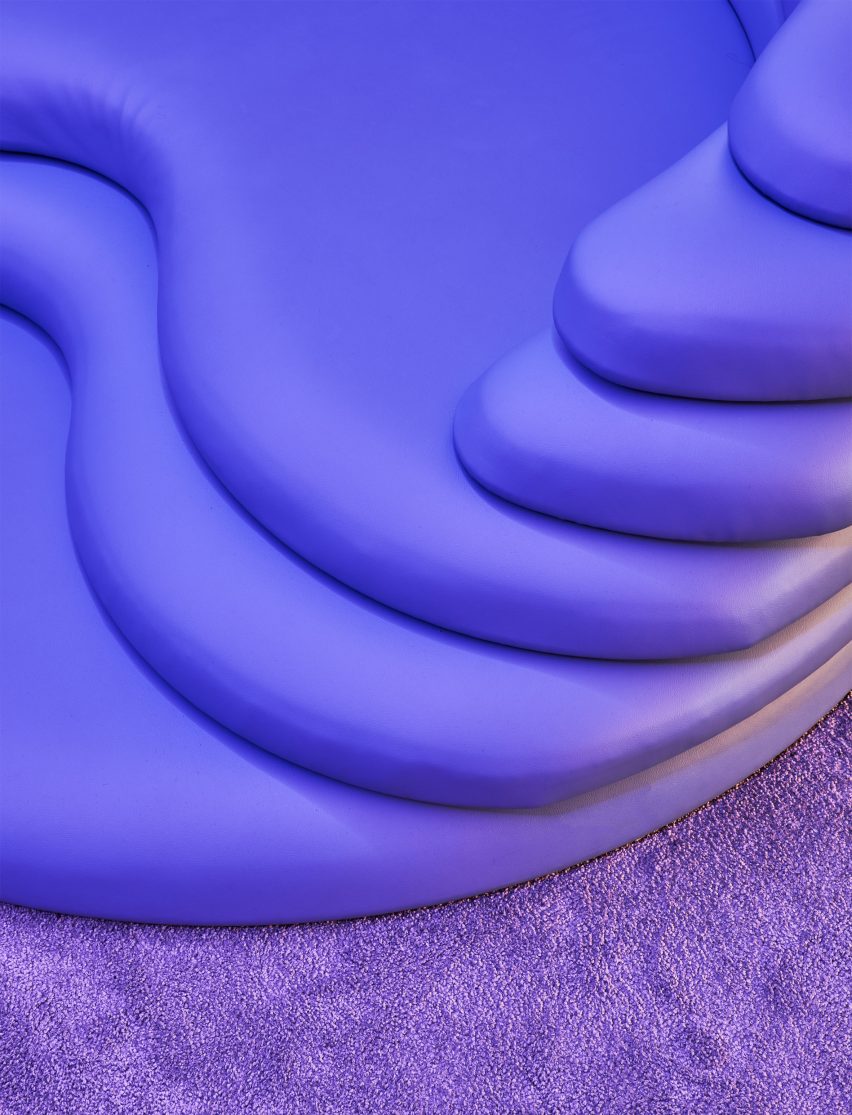
"My own voyage into motherhood came into focus during childbirth, when physical sensations gave way to an interstellar experience," the designer explained.
"I felt like a medical object during the birth of my daughter, therefore my urge as a designer and architect was to re-imagine the birthing environments within the institution of the hospital, where the majority of women within the western society reproduce."
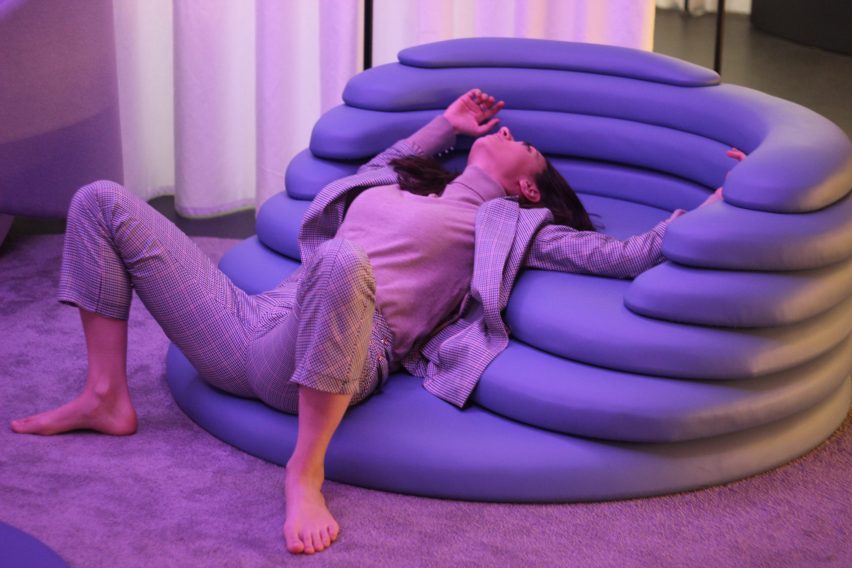
The first chair, Labour Silla, is designed for the initial stage of childbirth, when the mother-to-be goes into labour and the contractions start.
Aiming to both empower and comfort the woman using it, its ergonomic and "elasto-mechanical" qualities respond to the multiple demands of the pregnant body, enabling the mother to prepare for parturition.
The undulating form of the chair encourages the woman to sit, kneel, squat, rest, lean and crawl until she finds a comfortable position.
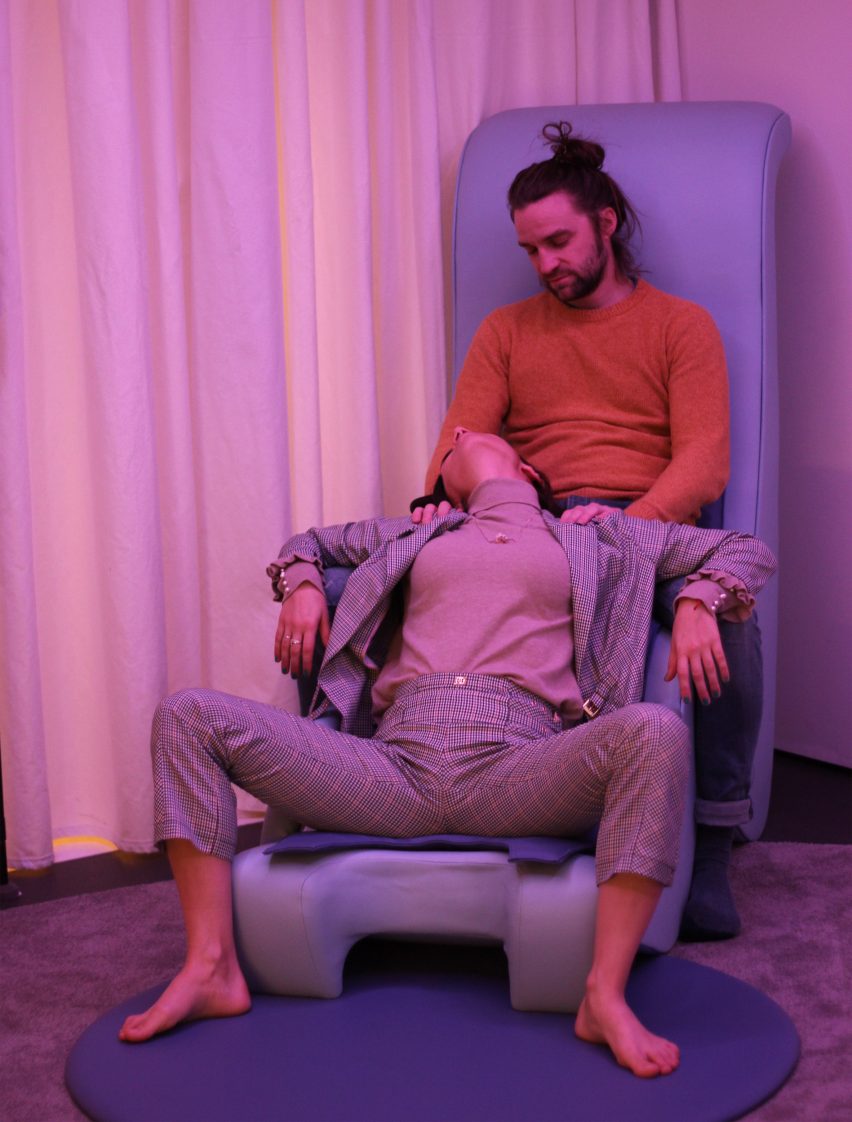
The second piece of furniture, Parturition Stool, is designed as a tandem for the birth-giving stage. Its step-like design allows the woman to take a squatting position at the bottom half of the chair while a second person can support them from behind.
According to Minkovska, this squat position reduces the risks of tear, episiotomy, C-section, medical interventions and forceps deliveries, as opposed to the traditional supine position, which can also extend the delivery time.
"The birthing scene has evolved, but sadly the elements supporting these techniques have not," she said. "They are dated and lack the progressiveness needed to accommodate the broad range of birthing techniques, such as hypnobirthing or water birth."
"The hospital can feel like a baby factory – you could deliver and be home within the same day," she continued. "I think it is a shock for the body and the maternal biological system."
"Through the Ultima Thule project, I recognised that birth is not a universal or monolithic experience, hence the flexible nature of the designs I have proposed."
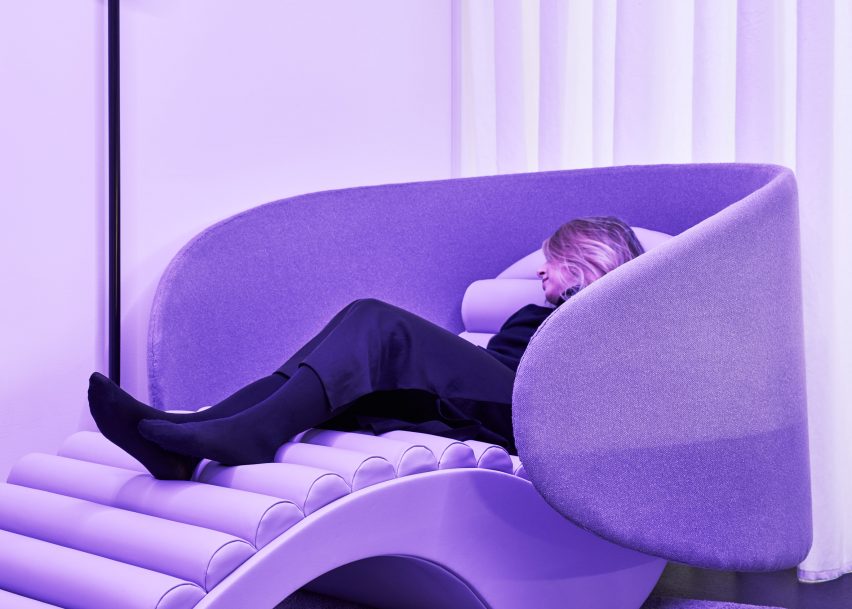
The third piece, named Solace Chaise, is a chaise lounge for postpartum or recovery use. Designed as a relaxing "secured cocoon", the chair offers the woman a private space for after every birth experience.
"Not all women have straightforward pregnancies, and therefore not all have so-called 'natural' births. I would like all women, regardless their life story, to feel included within the project," she said.
"This includes women who have decided to either willingly or unwillingly to terminate their pregnancies, women who have had still births as well as women who have undergone miscarriages," she continued.
"In our current socio-political climate, birth is a cultural conditioning. We are told what is right and wrong, but we are not taught how to protect ourselves and our well-being. I think design is a powerful tool for doing so, for liberating and empowering."
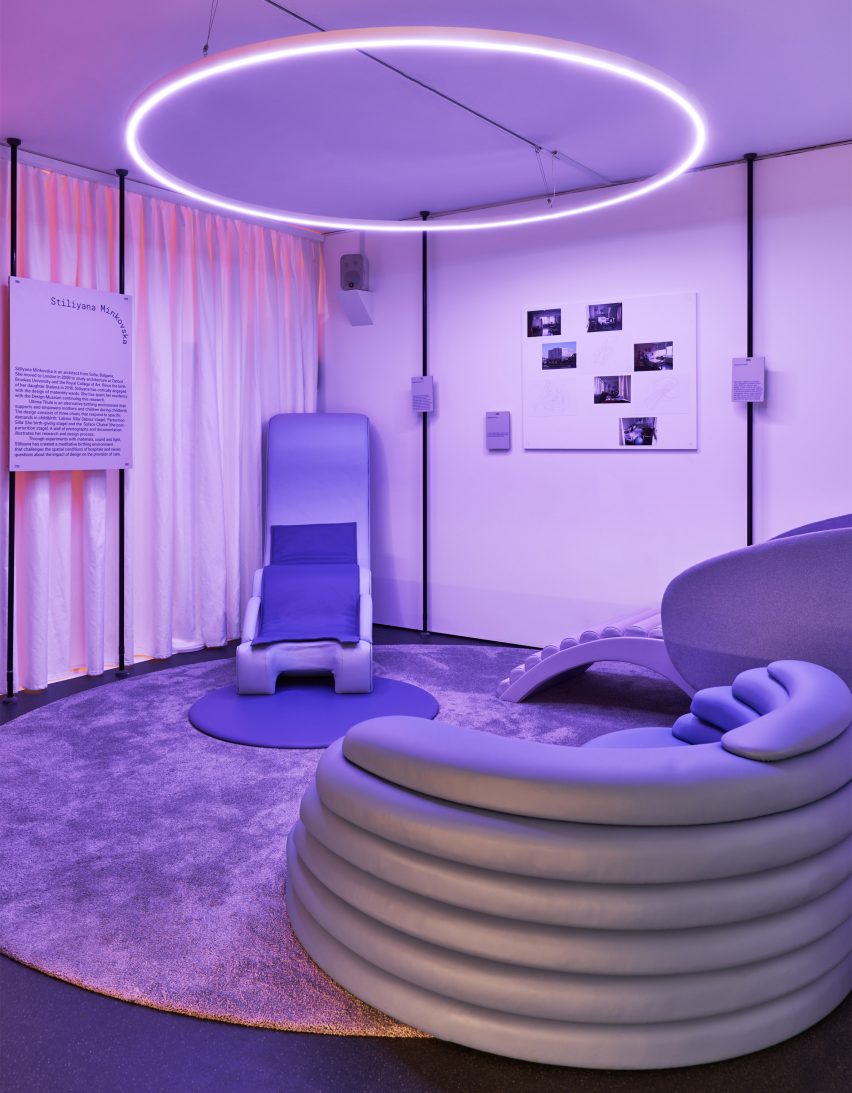
Minkovska hopes that the chairs can become the new normal, being used by women and birthing mothers in private hospitals such as the Lindo Wing at St Mary's Hospital and the Portland hospital in London.
"I think that our maternity centres and wards require strong design attention and female-centred qualities through light, sound and material palettes," said the designer.
"I have had some incredible feedback by mothers, doulas, health care professionals, doctors and midwives who agree that we need to have human-centred design at the core of our most humane institutions, especially at the sector where life begins."
As one of the Design Museum's 2020 "designers in residence", Minkovska displayed her Ultima Thule suite at the London museum for a month, until the institution closed its doors due to the coronavirus pandemic.
Minkovska was one of four designers exhibiting their work at the museum in response to the theme "cosmic".
Mále Uribe Forés reimagined salt as a precious material, while Marta Giralt made the microscopic "wonder material" graphene visible and Robert Johnson gave value to the fat waste produced in commercial kitchens across London.